Tea Stained Paper
Tea-stained paper is an art form with deep historical roots that were leveraged both for aesthetic qualities and document preservation. Understanding its origins, cultural significance, and historical uses enriches your appreciation of this ancient craft.
Origins
Your journey into the history of tea-stained paper starts in Asia, where the earliest records of tea staining can be traced. Tea, a prevalent drink, became a resourceful medium in art and documentation. Skilled artisans found that tea could produce a range of sepia-toned hues, which were valued for their visual appeal and this use of tea transcended simply a beverage.
Cultural Significance
The cultural significance of tea-stained paper is immeasurable. In several Asian cultures, it was symbolic of timeless elegance and often associated with classical antiquity. Artworks and documents treated with tea were revered, imbuing them with a sense of history and tradition. The practice often reflected:
Bestsellers
- A respect for the old and the wisdom it symbolizes.
- The desire to create a link between the past and present in artistry.
Historical Uses
Historically, tea-stained paper had practical applications besides its aesthetic appeal:
- Preservation: It provided a method of reinforcing paper, giving it added strength and longevity.
- Authentication: Discoloration with tea served as a means to make documents appear historic or official.
- Art: Artists utilized tea staining to add depth and character to their works, from scrolls to books and beyond.
By engaging with the history of tea-stained paper, you gain insights into the sophistication of past craftsmanship and the endurance of these techniques into modern times.
Materials and Tools
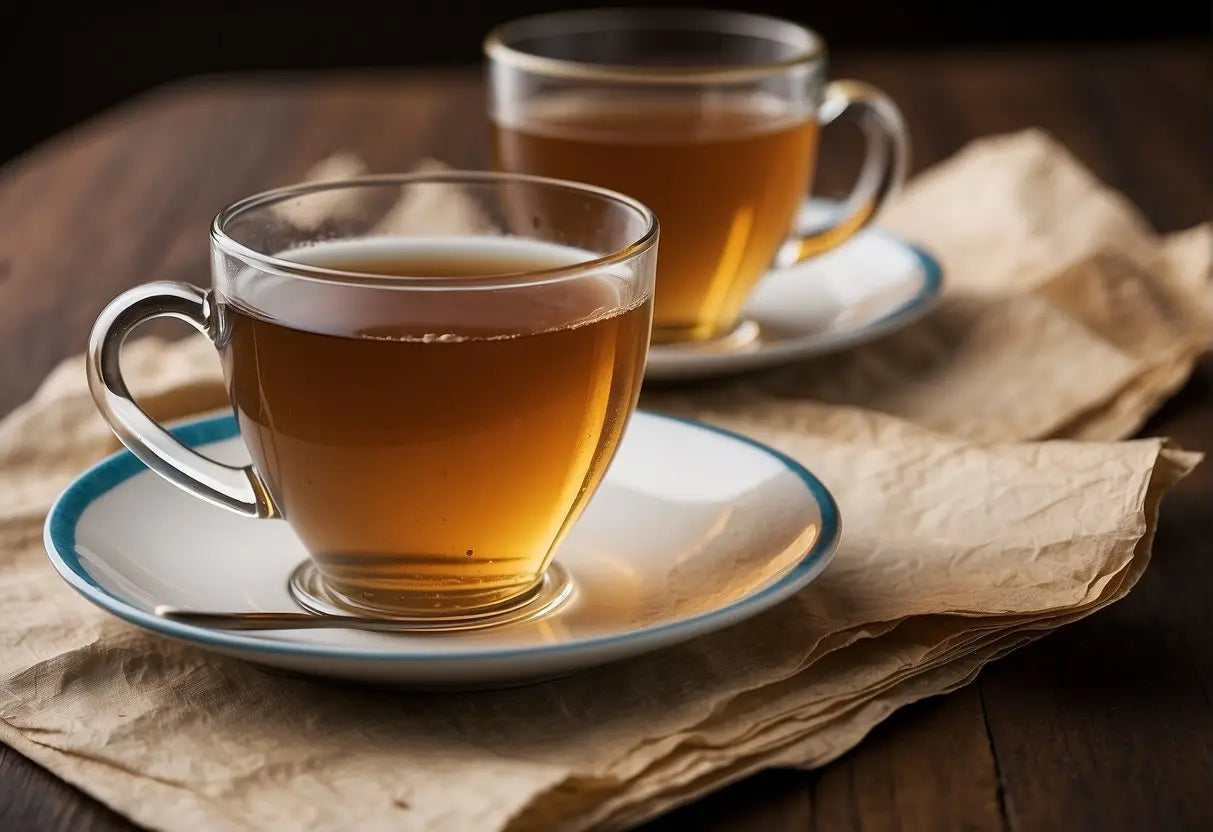
In order to successfully stain paper with tea, you need specific materials and tools at hand. Each component plays a critical role in creating the desired antique effect on your paper.
Types of Tea
-
Black Tea: Rich in tannins, black tea gives a dark amber hue. Common types include:
Brand Tea Variety Twinings English Breakfast Lipton Earl Grey -
Green Tea: Provides a lighter, more subtle coloring for a gentle vintage effect.
Brand Tea Variety Teavana Imperial Matcha Yogi Pure Green
Paper Selection
- Weight: Select paper with a weight of at least 24 lb. (90 gsm), to ensure it can withstand moisture without tearing.
- Texture: Rough or hot-pressed paper absorbs more tea, resulting in richer tones. Smooth paper offers more uniform staining.
Additional Supplies
- Containers: Shallow pans or trays large enough to hold your paper flat.
- Brushes: Soft-bristle brushes for even application of the tea.
- Heat source: A hairdryer can speed up the drying process, or you can let the paper air dry.
- Gloves: Optional for keeping hands stain-free during the process.
Tea Staining Process
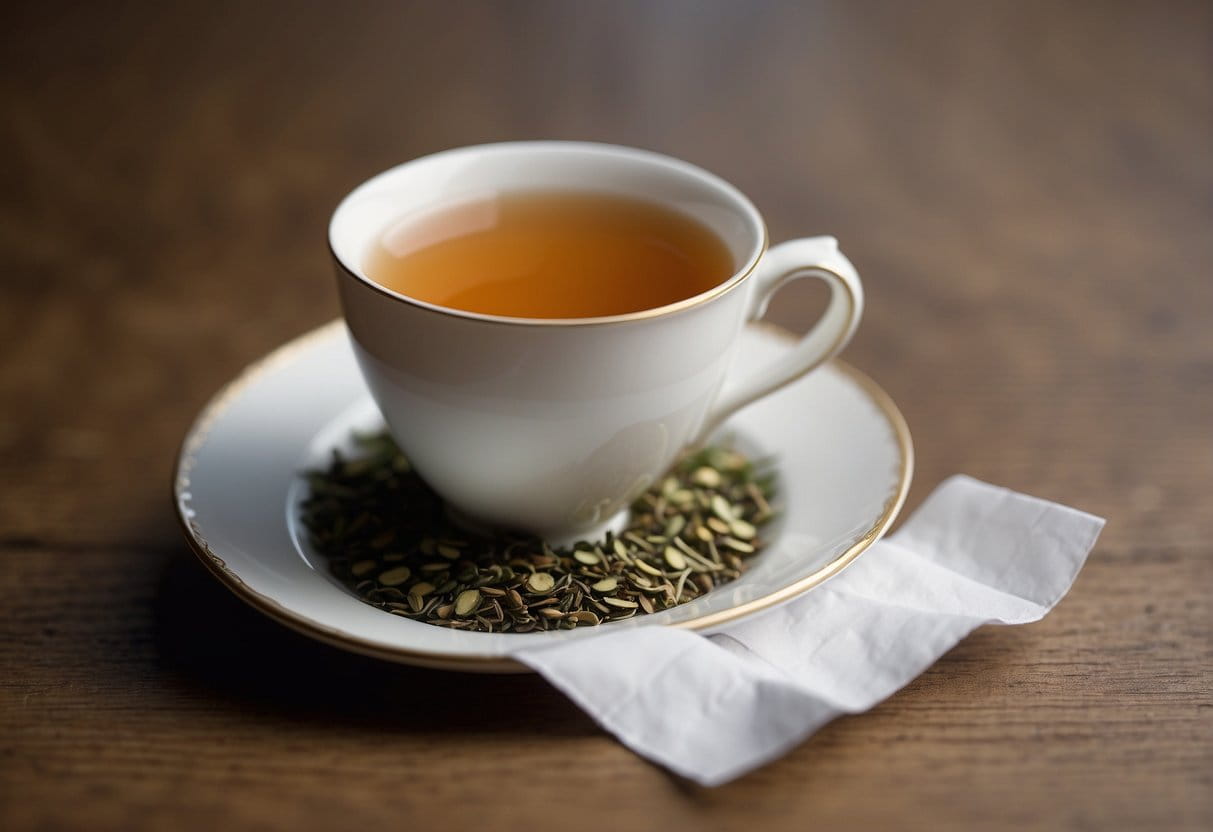
Tea staining is a method to give paper an aged appearance, which involves steeping tea to treat and color the paper, followed by proper drying and preservation.
Preparation of Tea
To prepare tea for staining, select the type of tea based on the color intensity desired, with black tea providing the darkest shade. Boil water and steep the tea bags or loose leaves; typically, use one bag or one teaspoon of leaves per cup of water. Steep for at least 5 minutes or longer for a deeper hue.
Materials Needed:
- Tea (bags or loose leaf)
- Boiling water
- Container for steeping
- Spoon (for stirring, if using loose leaf)
Paper Treatment Techniques
Before applying the tea, ensure your paper is clean and dry. Immerse the paper fully in the tea mixture, or use a brush for a more controlled application. For different patterns:
- Dip-Dyeing: Partially soak the edges of the paper for an ombré effect.
- Splattering: Use a brush to flick tea onto the paper for a speckled look.
Application Methods:
Lao Ban Zhang
- Immersion
- Brushing
- Splattering
- Folding (for creased patterns)
Drying and Preservation Methods
After treating the paper with tea, lay the sheets flat to dry, avoiding direct sunlight to prevent uneven bleaching. For quicker drying, you can bake the paper at a low temperature (around 200°F or 90°C) for a few minutes. Once dry, store the paper in a cool, dry place.
Drying Options:
- Air-dry, flat surface
- In the oven, low heat
- Use of a hairdryer
Ensure the stained papers are separated by parchment to prevent sticking or color transfer. Store them in an archival-quality sleeve or container to maintain their condition.
Artistic Applications
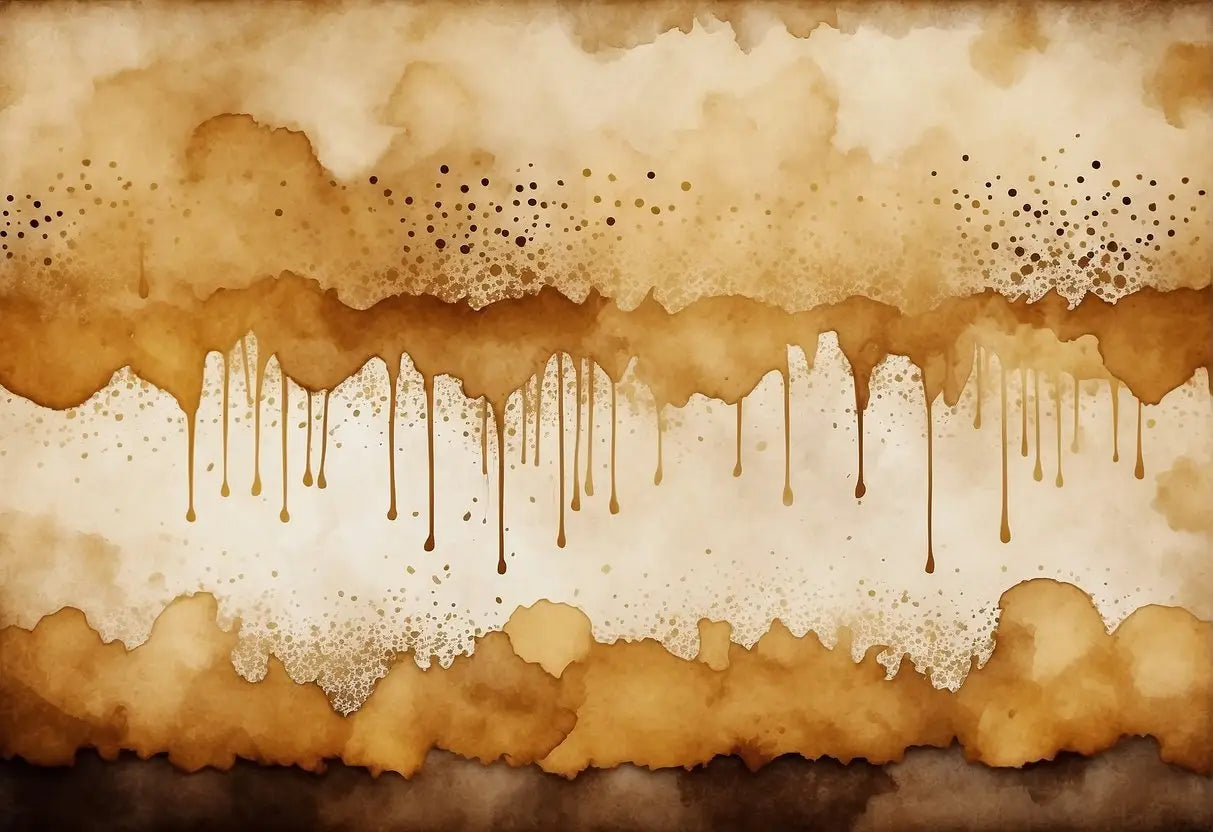
Using tea-stained paper, you can add a vintage or classical feel to your artistic projects. This technique often incorporates a rich, sepia-tinted patina that can transform the ordinary into something with historical character and depth.
In Calligraphy
- Materials: You'll need loose-leaf tea, hot water, paper, and your calligraphy tools.
- Process: After staining your paper with tea and letting it dry, you can use calligraphy ink to write on the textured, aged-looking surface. This enhances the elegance of your lettering.
Such an approach is especially fitting for:
- Wedding invitations
- Certificates
- Poetry pieces
For Antique Reproduction
- Techniques: Gently rubbing the edges of your tea-stained paper can produce an authentic worn-out look.
-
Applications: This method is ideal for creating:
- Vintage journal replicas
- Old maps
- Aged documents
Remember to handle the paper with care to prevent unintended tears, providing an antique appearance without damaging the integrity of the work.
In Mixed Media Art
- Layering: Tea-stained paper adds a dimensional aspect to mixed media pieces when layered with other materials.
- Textures: Combining it with elements such as fabric, lace, or metallic accents can significantly enhance the visual appeal.
Consider using tea-stained paper in:
- Collages
- Scrapbooking
- Art journals
In this context, the stained paper serves as a unifying backdrop that ties together diverse components in your artwork.
Practical Benefits
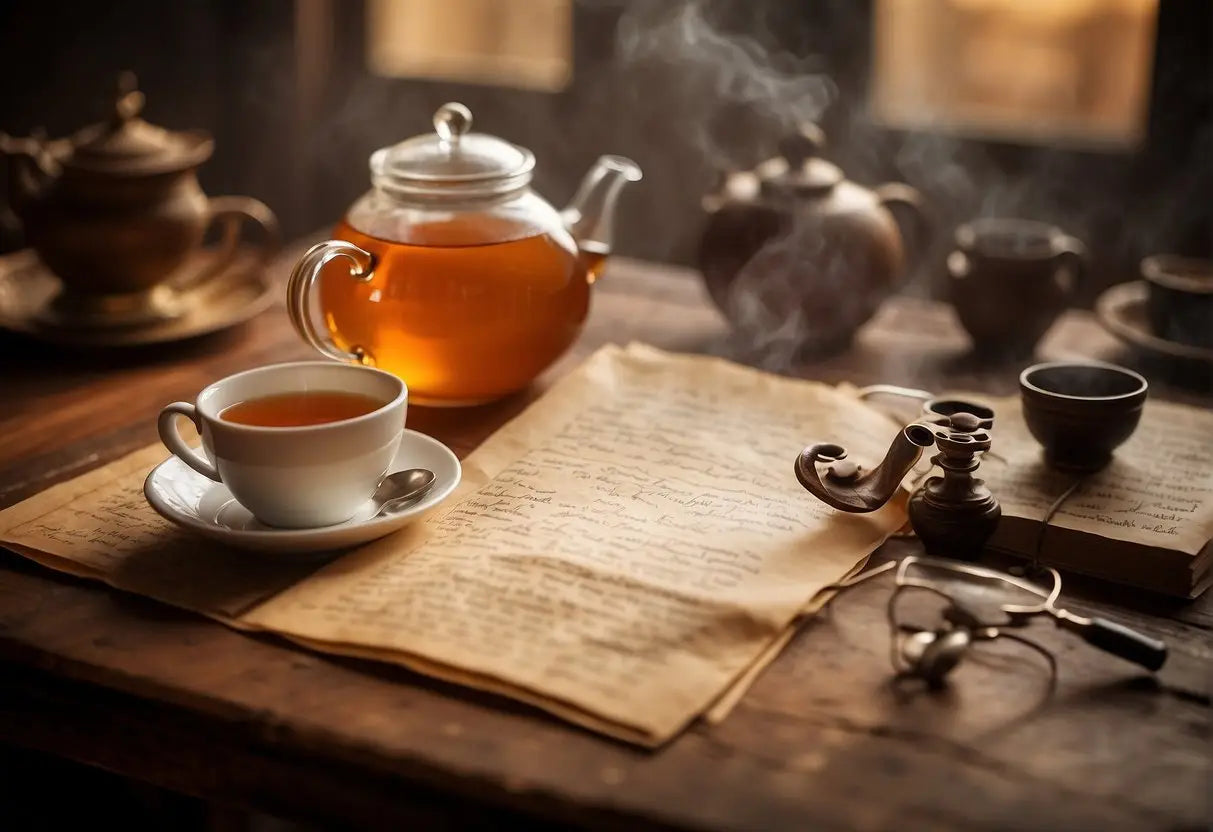
When seeking a creative approach for projects, you may find tea-stained paper to be not only aesthetically pleasing but also beneficial in practical ways.
Cost-Effectiveness
Using tea to stain paper is a highly cost-effective technique. You can transform plain paper into something with vintage appeal without the need to purchase specialized or expensive materials. Here's a brief cost breakdown to put this into perspective:
- Plain Paper: Minimal cost (often around $0.01-$0.05 per sheet for standard printer paper)
- Tea Bags: Inexpensive, with an average cost of $0.10-$0.20 per bag. One tea bag can stain multiple sheets.
Given the low-cost resources required, your overall expenditure remains minimal, especially compared to buying pre-aged or specialty paper.
Environmental Impact
Staining paper with tea is an environmentally friendly option. The process involves:
- Biodegradable Materials: Both paper and tea leaves are biodegradable, reducing waste.
- Non-Toxic: Tea is a natural, non-toxic substance, in contrast to some commercial inks and stains.
- Reuse of Materials: Tea bags used for staining can be repurposed from your daily tea drinking routine, thus reducing waste.
By opting to use tea-stained paper, you're making a conscious decision to lessen environmental impact while engaging in a creative and aesthetic activity.
Common Challenges and Solutions
Achieving consistent results when staining paper with tea can be challenging due to various factors. Below are common issues encountered during the process, along with practical solutions.
Stain Uniformity
To ensure an even stain across your paper, follow these steps:
- Preparation: Flatten and smooth your paper before starting.
- Consistency: Use the same tea concentration and temperature throughout.
- Application: Apply tea with a wide brush in one direction for uniform coverage.
If you notice uneven staining:
- Repeat the process: Apply additional coats until the color evens out.
- Blot Away Excess: Use a paper towel to dab away extra tea and prevent splotches.
Paper Wrinkling or Damage
Wrinkling or damage can occur if the paper is not handled correctly. To avoid this:
- Use Thick Paper: Opt for heavyweight paper that can absorb moisture without tearing.
- Dry Carefully: Allow the paper to dry on a flat surface and avoid using heat sources that can cause warping.
Should your paper wrinkle or tear:
- Flatten Under Weight: Once dry, place the paper under a stack of books to smooth out wrinkles.
- Repair Tears: Use clear, acid-free glue to mend any tears discreetly.
Advanced Techniques
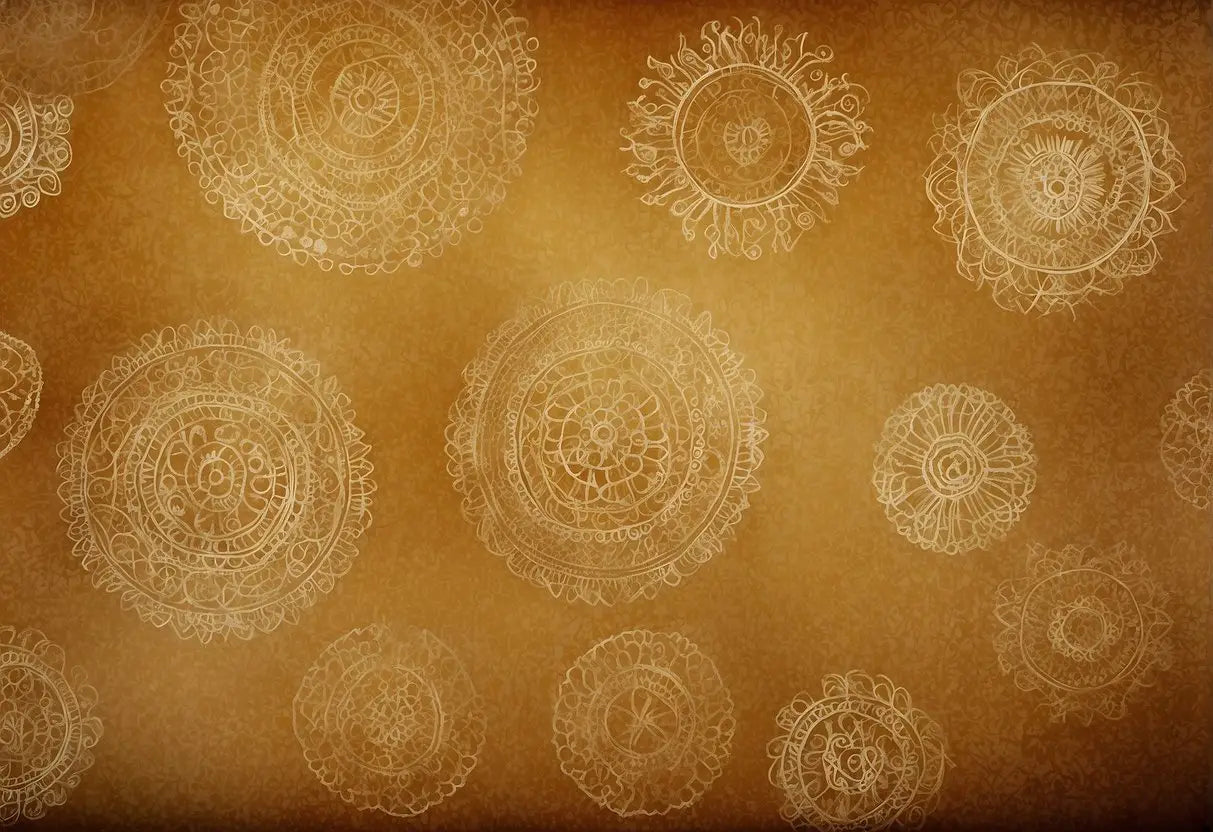
In moving beyond basic tea staining, you can create more complex and visually interesting effects by using advanced techniques such as layered color variation and incorporating different embellishments.
Layering and Color Variation
To achieve depth and a rich palette in your tea-stained paper, begin by preparing multiple tea solutions of various strengths. For example:
- Weak solution: 1 tea bag in 2 cups of water
- Medium solution: 3 tea bags in 2 cups of water
- Strong solution: 5 tea bags in 2 cups of water
- Start with the weakest solution and apply a layer to your paper.
- Allow the paper to dry completely before applying the next layer.
- Gradually increase the strength of the tea solution for each layer, ensuring each layer is dry before applying the next. This creates a gradual build-up of color, adding complexity and richness to the paper.
Incorporating Embellishments
After staining your paper, you can add visual interest by including various embellishments:
Pressing Leaves or Flowers
- Select leaves or flowers that are not too thick.
- Place them between two sheets of your tea-stained paper.
- Use a heavy book to press them flat and leave for 24 hours.
- Use a stencil to apply patterns onto the tea-stained paper.
- Soak a sponge in the tea solution and dab through the stencil.
Remember that the tea can cause changes in the texture of your paper, so treat it gently as you apply these embellishments.
Preservation and Care
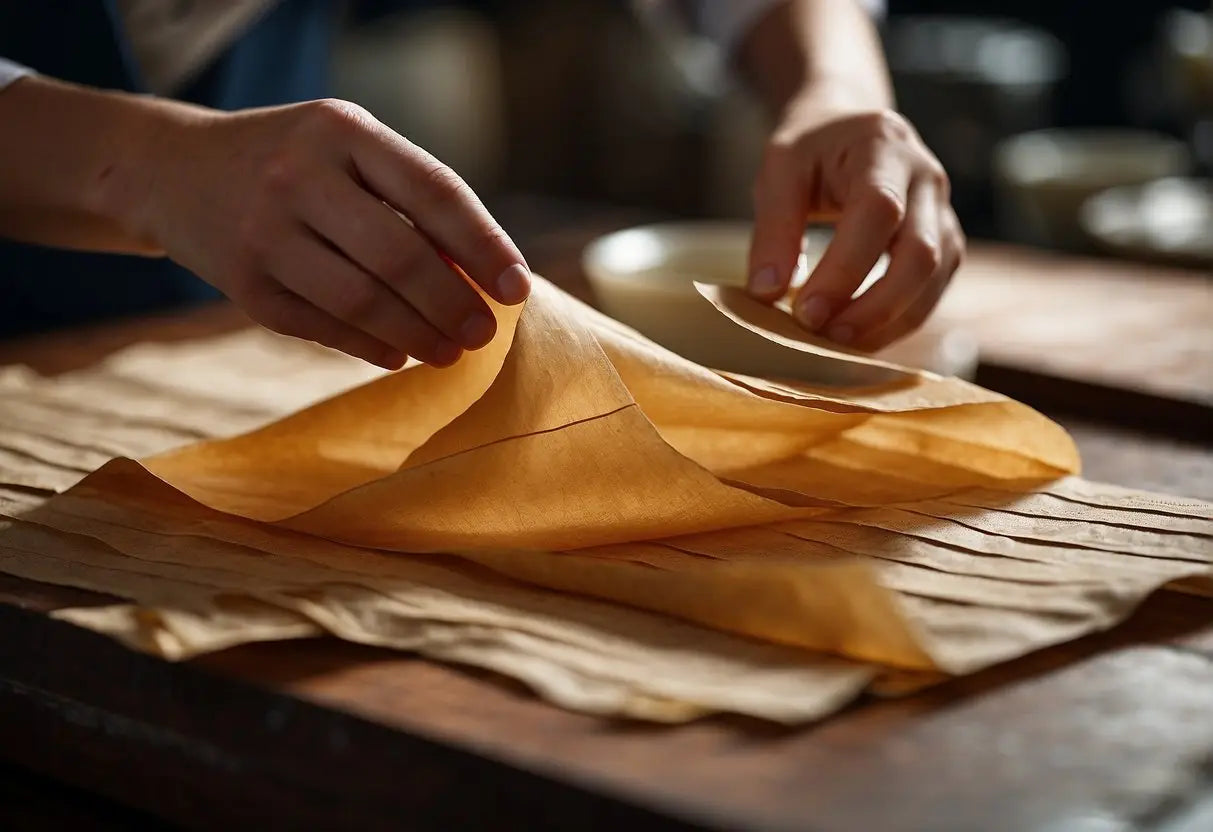
Preserving tea-stained paper involves maintaining its condition and preventing deterioration. Precise storage environments and careful handling are imperative for longevity.
Long-Term Storage
Environment: Store your tea-stained paper in a cool, dry place, with a consistent temperature of approximately 68°F (20°C). Keep the relative humidity at 50% to prevent mold growth and paper degradation.
Containers: Use acid-free storage boxes or folders. Wrap the paper in acid-free tissue for added protection.
Avoid Light Exposure: Minimize exposure to light, especially direct sunlight, which can cause fading and increase the risk of damage.
Handling and Display
Clean Hands: Always handle tea-stained paper with clean, dry hands or use cotton gloves to avoid transferring oils and dirt.
Support: Use a clean, flat surface for examination or display. Support the paper fully when moving to prevent stress and tears.
Display Cases: If displaying, use UV-filtered glass in frames to protect the paper from light damage. Ensure adequate air circulation to prevent moisture build-up.
Online Resources and Communities
The internet is replete with resources aimed at helping you master the craft of tea staining paper. These range from comprehensive tutorials to vibrant communities where enthusiasts and professionals share advice and showcase their work.
Tutorials and Guides
For step-by-step instructions on tea staining paper, reputable sites like Instructables and WikiHow offer detailed tutorials. These guides cover a variety of techniques tailored to different skill levels and project needs.
-
Instructables:
- Basic Techniques: Getting Started with Tea Staining
- Advanced Methods: Expert Tips for Tea Staining
-
WikiHow:
- Comprehensive Guide: How to Tea Stain Paper
Forums and Social Media Groups
You'll find a community of fellow enthusiasts on social media platforms and specialized forums. Seeking advice, sharing projects, or discussing techniques are all facilitated in these groups.
-
Reddit:
- r/TeaStaining: A subreddit dedicated to the art of tea staining, including troubleshooting and inspiration.
-
Facebook:
- “Tea Stained Artisans Group”: A closed group where members share their work and tips.
Engaging with these resources provides you with the opportunity to learn, share, and connect with others who are passionate about tea stained paper.
← Older post Newer post →











